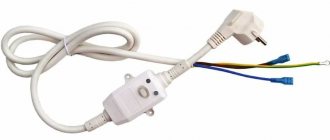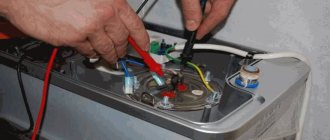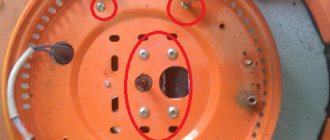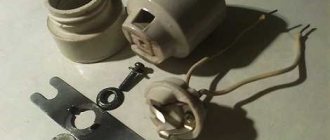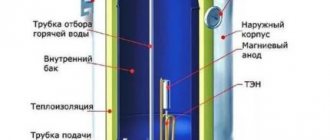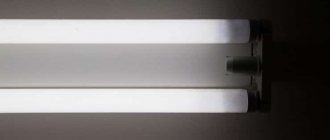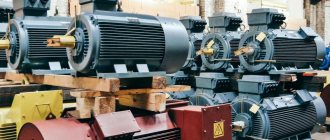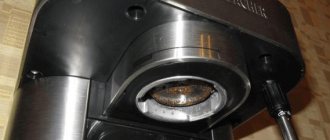Causes
Vibrations of electrical machines can occur at idle, then the source of the defect is of a magnetic nature (incorrect air gap between the stator and rotor, peeling of the varnish of the windings, etc.) or at the time of start-up and under load, then the source of the problem is mechanical.
Mechanical sources of vibration include shaft bending (can be either a consequence or a cause), rotor misalignment, overheating of bearings (for example, due to lack of lubrication), loosening of threaded connections securing electric motor elements. Also, the mode of use of the electric motor (generator or propulsion) can explain the cause of the malfunction, for example, breakage of the electric fan blades or misalignment of the coupling when rotating hydraulic units.
What is a system for collecting data and analyzing measurement results
Traditional static data collection gives us insight into measurements periodically, but cannot capture dynamic changes in structural shock loads, engine vibration, or changes in environmental noise. This makes it difficult to use the data in predictive diagnostic systems. A feature of modern data acquisition systems - Data Acquisition System, or DAQ (an example of such systems from Keysight is shown in Fig. 4) - is the ability to dynamically collect data, which allows them to scan each measurement channel, take several measurement samples and not depend on external conditions [ 5, 6].
Rice. 4. Keysight's Advanced DAQ Data Acquisition Systems
This approach to data collection ensures accuracy and reduces the errors often associated with collecting and analyzing data from dynamically changing processes and accumulating historical data for predictive analytics systems. This will provide an opportunity to optimize the drive design and identify its weak points, for example, the mechanical and electrical resonance frequencies of an electric vehicle engine, which, given the complex spectrum of the vibration signal, can only be determined in the frequency domain, and then analyzed in detail in the time domain. Or, after studying industrial drives in various operating modes and obtaining vibration profiles, the latter can be used as templates and included in the final analytics system for a specific application.
Vibration characteristics
When measuring vibration, its vertical and horizontal components are measured (or, as they are also called, axial and transverse). There are several concepts of vibration characteristics, let's figure out what they are and how they are measured:
- Vibration velocity (measured in millimeters per second, mm/s) is a value characterizing the movement of the measurement point along the axis of the electric motor.
- Vibration acceleration (measured in meters per second squared, m/s2) is a direct dependence of vibration on the force that caused it. Vibration displacement (measured in micrometers, µm) is an amplitude value indicating the distance between the extreme points during vibration.
When measuring vibration characteristics, vibration velocity is usually measured, since it most accurately describes the nature of the problem. In this case, it is not the highest value of the vibration velocity that is measured, but its root mean square value (RMS). Due to the fact that according to the principle of operation, all pointer devices (which were used previously) are integrating. Permissible vibration standards for electric motors are given in the Operating Rules for Electric Power Plants and Networks (PTE) and in GOST ISO 10816.
Since there are many different electrical machines, GOST R 56646-2015 will help you figure out which standard from the GOST ISO 10816 group is applicable to a specific electric motor. For example, compressors, pump motors, and other electric drive applications may have different codes and measurement requirements.
These documents contain basic requirements, standards, recommendations, vibration classes, etc.
How to properly install a vibration sensor?
Most machines consist of several rotating components. Motors, pumps, compressors, fans, conveyor belts, and gearboxes are rotating mechanisms that are often used in machines.
Most rotating mechanisms have bearings that support the weight of the rotating parts and carry the load associated with rotational and oscillatory motion. Typically, bearings carry the majority of the load, so it is not surprising that bearings often fail and show the first signs of failure.
In this regard, vibration measurements are usually performed on bearings on which the accelerometer is installed.
Since the conclusion about the technical condition of machines is drawn up on the basis of the obtained measurement data, it is necessary to be very careful about the data collection procedure. It is important to remember that the accuracy of data measurement depends significantly on the way the accelerometer is installed on the measured object.
How should the accelerometer be installed to obtain accurate measurement data?
Below are the basic principles:
1. The accelerometer must be installed as close to the bearing as possible
Imagine that the doctor is listening to your heart through a thick layer of clothing, while placing a stethoscope in the area of the kidneys, not the heart. In this case, you would most likely doubt the accuracy of the diagnosis.
Similarly, when measuring machine vibration, the sensor must be installed as close to the bearing as possible, namely as close to the bearing centerline as possible, which eliminates the possibility of data distortion during the measurement.
2. The accelerometer must be securely attached
To obtain accurate measurement data, the accelerometer must exactly follow the oscillatory motion of the machine on which it is installed. To do this, the accelerometer must be installed so that it does not swing or move. An insecurely installed accelerometer generates signals that are distorted by its own vibrations.
There are several ways to mount an accelerometer, but the most common is to mount it on a magnetic base, since this type of mounting provides reliable measurement and at the same time is user-friendly. The magnetic base allows you to securely attach the accelerometer to the measurement object and perform measurements on several machines at once using one accelerometer. Installing and removing the accelerometer using a magnetic base requires minimal time.
To ensure reliable fixation of the accelerometer to the measurement object, the magnetic base must be flat and fit tightly to the surface of the measured object. The mounting surface must be free of debris, rust and peeling paint.
3. The accelerometer must be installed in the correct direction
In different situations, the accelerometer is installed in different directions.
For example, to determine parallel misalignment, the accelerometer is installed on the bearing in the radial direction, and to detect angular misalignment, it is installed in the axial direction.
The signal generated by the accelerometer depends on the direction in which the sensor is installed, since the amplitude of the mechanical vibrations changes in different directions.
The mounting surface must be magnetic (steel, nickel, cobalt alloys).
Avoid hitting or heating the magnetic base as this will degrade the magnetic properties.
4. The accelerometer must be installed at the same measuring point
To obtain reliable measurement data, you must use the same accelerometer and install it at the same measurement point. Whenever possible, always take measurements with the same sensor installed in the same location.
5. The accelerometer must be installed on hard surfaces
It is unacceptable to install the accelerometer on flexible surfaces of the machine, as this will lead to distortion of the spectrum due to vibrations of the flexible part of the machine.
You cannot install the accelerometer on very light objects, otherwise the vibration signal will be distorted by the weight of the accelerometer. As a rule, the total weight of the accelerometer and magnet should be less than 10% of the weight of the object being measured.
6. Accelerometer care
If handled carelessly, the accelerometer may produce incorrect data. You must be very careful when attaching the accelerometer to the mounting surface to ensure that no shock is caused by the strong magnetic attraction. To do this, tilt the magnet and move the accelerometer to the surface to be measured at an angle, and after the magnet touches the surface, carefully straighten the magnet until the surfaces are completely in contact.
In order to remove the accelerometer from the surface being measured, do not pull the accelerometer under any circumstances. You should grab the accelerometer along with the base and tilt it to the side.
The accelerometer cable should not be twisted (broken), but should be securely fastened in such a way as to prevent damage. A twisted or loose cable can distort the vibration spectrum data.
7. Personal safety
When carrying out vibration measurements, safety precautions must always be observed. There are three main hazards to consider when collecting vibration data: injury from moving parts, electrical shock, and damage caused by the magnetic properties of parts.
First, when installing the accelerometer, you must ensure that the cable does not get caught in moving components. Although a quick release coupling reduces this type of risk to a minimum, it cannot be relied upon alone. In addition to cables, loose clothing, long hair and belts can become caught in moving parts.
Secondly, under no circumstances should the accelerometer be installed on a live surface, as this may cause electric shock.
Third, do not keep the magnetic base near magnet-sensitive items such as credit cards, floppy disks, videotapes, cassette tapes, and watches, as they may be damaged by magnetic fields.
There are also other types of hazards that can arise when performing vibration measurements, so you should carefully read the operating and safety instructions before starting work.
Vibration measuring instruments
Instruments for measuring vibration are divided into several types: vibrometer, vibrograph and vibration analyzer. A vibrometer, the simplest device, determines only one parameter (rms vibration velocity). Vibrograph, a writing instrument that records the amplitude of vibrations. These two devices will only help identify excesses of standards.
Only a vibration analyzer can identify the causes (based on the measured parameters) of vibration characteristics violations. There are single-channel and multi-channel vibration analyzers; these devices allow you to load into them a program of measured parameters from a computer, which, after measurements, will allow you to perform an analysis, make a calculation and identify the source of vibrations. When using a vibration analyzer, vibration sensors are attached to the electric motor. In this way, you can accurately determine the cause of the malfunction and measures to eliminate it.
Which machines need vibration control?
First of all, it is necessary to monitor critical equipment. After all, for example, it is inappropriate to first examine people with ideal health conditions and then move on to those patients who really need treatment. The same applies to monitoring the technical condition of equipment. To avoid unexpected and costly breakdowns, regular vibration monitoring is required for the following machines:
- Machines that require expensive, lengthy or complex repairs;
- Machines that perform very important functions in the production process or the operation of the enterprise as a whole;
- Machines that frequently break down;
- Machines whose reliability is extremely important;
- Machines that affect the safety of people and the environment.
How does a vibration sensor work?
To accurately measure vibration, it is necessary to correctly install the vibration sensor on the object being measured. There are several types of sensors for measuring vibration, the most widely used is the accelerometer, as it has many advantages over other types of sensors.
An accelerometer is a sensor that generates an electrical signal proportional to the magnitude of the acceleration of the vibrating object on which the sensor is mounted.
The acceleration of a vibrating component is the rate at which the speed of the vibrating component changes.
The acceleration signal generated by the accelerometer enters the instrument, which in turn converts it into a vibration velocity signal. Depending on the user's choice, the signal can be presented as a time signal or a vibration spectrum. The vibration velocity spectrum is obtained from the temporal vibration velocity signal using the Fast Fourier Transform algorithm.
Below is a simple example of vibration data collection.
Fault detection algorithm
To determine and eliminate the causes of electric motor vibration, there is a simple algorithm. Inspect the running electric motor for the absence of loose bolts, covers, and the reliability of fastening the motor to the frame. Next, you need to disconnect the engine and the mechanism it drives. If the vibration disappears, then the reason is in the coupling (misalignment of the coupling halves, different finger weights, and so on).
If vibration is present at idle after disconnecting the drive mechanism. This means that the reason is in the electric motor itself; when the power is turned off (when the engine is on freewheel), the vibration should stop. If it stops when the power is turned off, then the air gap between the stator and rotor is to blame. If the vibration amplitude decays when the power is turned off, the reason is a mechanical defect in the rotor (bend, crack, defect in the rotor barrel) or a defect in the coupling half.
If there is no vibration when the coupling half is removed, then it is in the coupling half; otherwise, it is necessary to remove the rotor for dynamic balancing on the machine or to identify damage to the windings. When diagnosing an electric motor on rolling bearings, their malfunction is easy to identify - increased noise and strong heating.
A defect in the sliding bearings will appear under load; if the causes of vibration under load cannot be identified, then most likely the bearings are to blame; they need to be replaced or separately diagnosed (for example, vibration sensors must be connected to the location where the bearings are installed).
When detecting increased heating of bearings, it is also necessary to measure the level of vibration characteristics, because the bearing itself is rarely the source of the problem, but rather as a consequence.
It is important to understand that on critical mechanisms (hydroelectric power station turbine units, electric motors in nuclear power plants, electric drives of hydraulic power plants, and so on), vibration levels must be measured regularly, in accordance with the maintenance schedule. Measurements should be carried out by representatives of the manufacturer or specialists from an organization licensed to carry out this type of work. Measurements of vibration characteristics with measurements of bearing temperatures must be reflected in the electrical machine form.
Now you know why electric motor vibration occurs, as well as how to identify and eliminate the causes. We hope the instructions provided helped you find and solve the problem!
Number of measurement channels
- Single-channel – measures data from only one channel at a time. At the same time, it can simultaneously measure vibration acceleration, vibration velocity and vibration displacement;
- Single-channel with an expansion attachment for several channels - measures data from several sensors, but the frequency of channel sampling is significantly reduced;
- Multichannel with parallel polling of all channels is a very useful device in complex cases, since the result of defect diagnosis is much more reliable. But such devices are more difficult to carry and deploy at the measurement site. And, of course, they are more expensive.
Data acquisition system based on DAQ970A/DAQ973A
The DAQ970A/DAQ973A is Keysight's new data acquisition system, a three-slot base unit that uses the measurement unit from the company's established DMM (Figure 5). This low-cost, compact device combines the benefits of proven Keysight measurement tools with modular flexibility and universal inputs with built-in signal conditioning [7].
Rice. 5. Keysight DAQ970A/DAQ973A data acquisition system with plug-in modules
Key features and technical specifications of the DAQ970A/DAQ973A data acquisition system:
- base unit with three slots;
- built-in 6.5-digit digital multimeter with a basic DC voltage measurement accuracy of no worse than 0.003%;
- scanning speed: up to 450 channels/s;
- 9 plug-ins, including a new 4-channel simultaneous sampling digitizer;
- up to 120 channels per base unit;
- scanning memory: up to 1 million points;
- Measures and converts 14 types of input signals, including: temperature, DC and AC voltage, frequency, resistance using 2- and 4-wire methods, frequency and period of signals;
- Availability of LAN and USB ports for easy connection to a computer; DAQ973A comes with optional GPIB (Digital Instrument Bus Interface);
- Large 4.3" color display for easy setup and viewing of data;
- USB storage support for copying/logging data in offline applications;
- Compatible with Path Wave's BenchVue software for advanced time/frequency domain measurements.
For the purpose of this article, the DAQ970A data acquisition system is used with the DAQM909A digitizer module, also offered by Keysight [8]. The appearance of the module is shown in Fig. 6.
Rice. 6. Digitizer module DAQM909A for data acquisition systems DAQ970A and DAQ973A
The DAQM909A module enables the DAQ970A and DAQ973A data acquisition system to perform dynamic data acquisition for applications such as harmonic and noise distortion, power bus analysis, and acoustic characterization of electromechanical devices. Each channel can be independently programmed to one of four input modes and current source settings. Three of these modules, combined into a common base unit, can provide simultaneous digitization of twelve channels.
Key features and technical characteristics of the DAQM909A module of the DAQ970A/DAQ973A data acquisition system:
- 4 channels of simultaneous sampling with differential inputs;
- sampling rate: up to 100 kSa/s (in the frequency domain) and up to 800 kSa/s (in the time domain) with a resolution of 24 bits;
- differential input range selection: up to 36 V (peak);
- power supply for IEPE sensor: 2–4 mA;
- acquisition memory/channel: 16–48 MS
Reasons for increased shock impulses
- Contamination of the bearing lubricant during installation, during storage, or during operation.
- Deterioration in the performance properties of the lubricant during operation, leading to a discrepancy between the used lubricant and the operating conditions of the bearing.
- Vibration of the mechanism, creating increased load on the bearing. Shock pulses do not respond to vibration and reflect deteriorating operating conditions of the bearing.
- Deviation of the geometry of bearing parts from the specified one, as a result of unsatisfactory installation of the bearing.
- Unsatisfactory shaft alignment.
- Increased bearing clearance.
- Loose bearing seat.
- Impact impacts on the bearing resulting from the operation of gearing and collisions of parts.
- Malfunctions of the electromagnetic nature of electrical machines.
- Cavitation of the pumped medium in a pump, in which shock waves are directly created as a result of the collapse of gas cavities in the pumped medium.
- Vibration of connected pipelines or fittings associated with instability of the flow of the pumped medium.
- Bearing damage.

